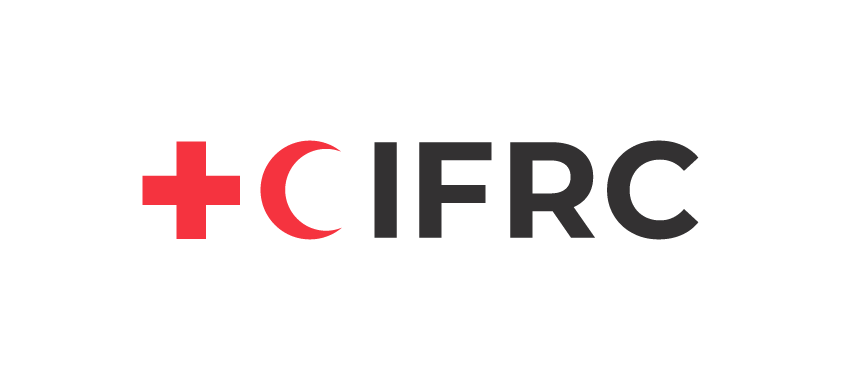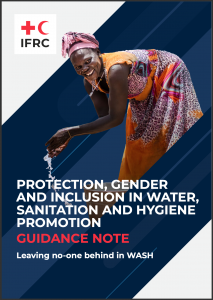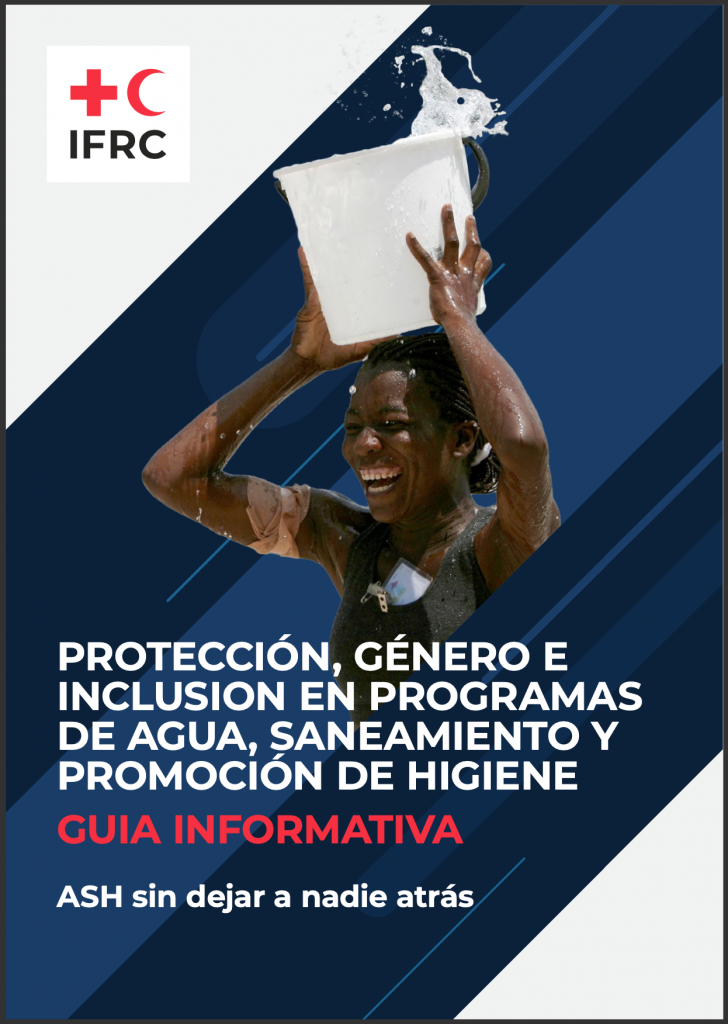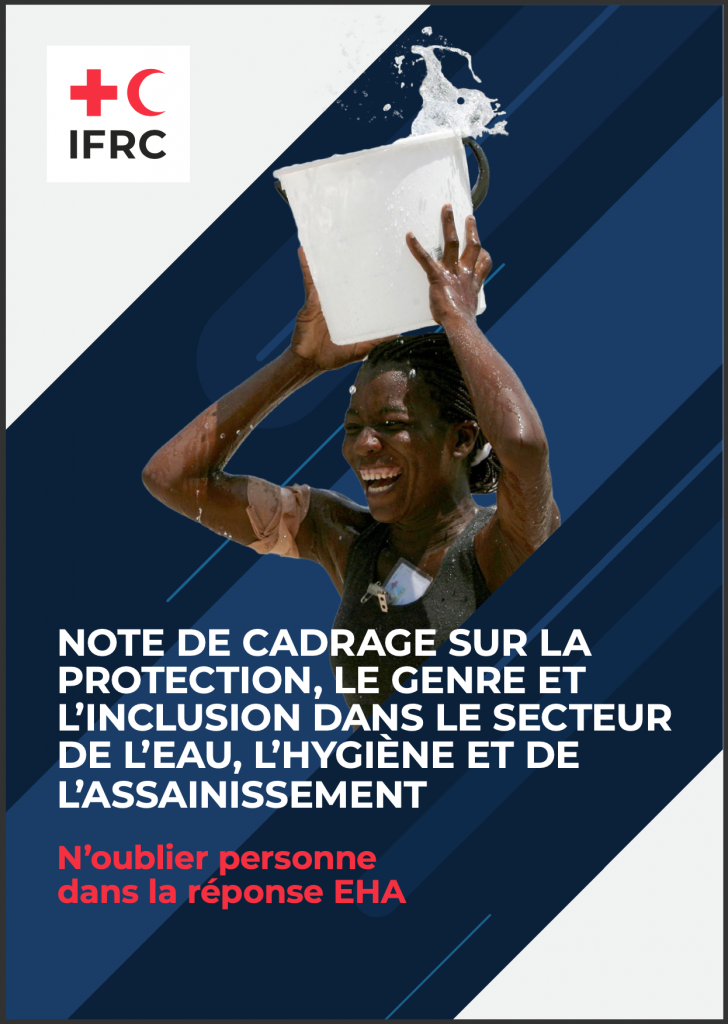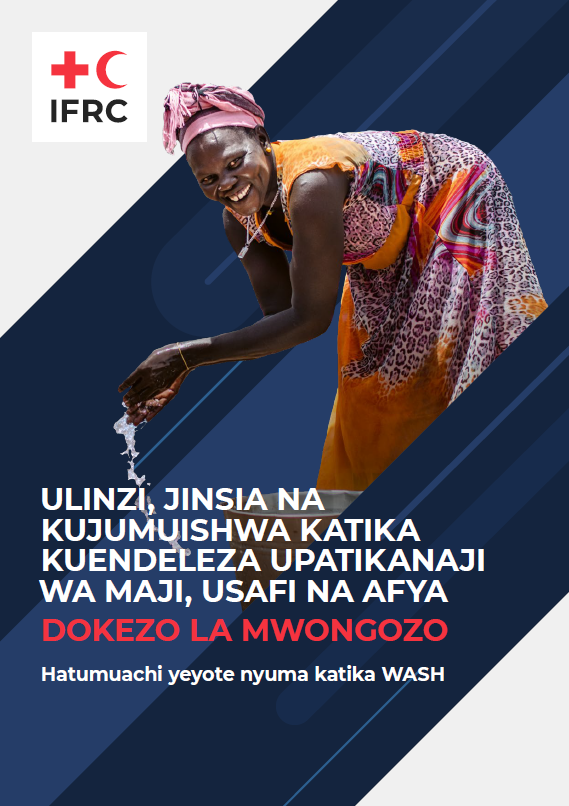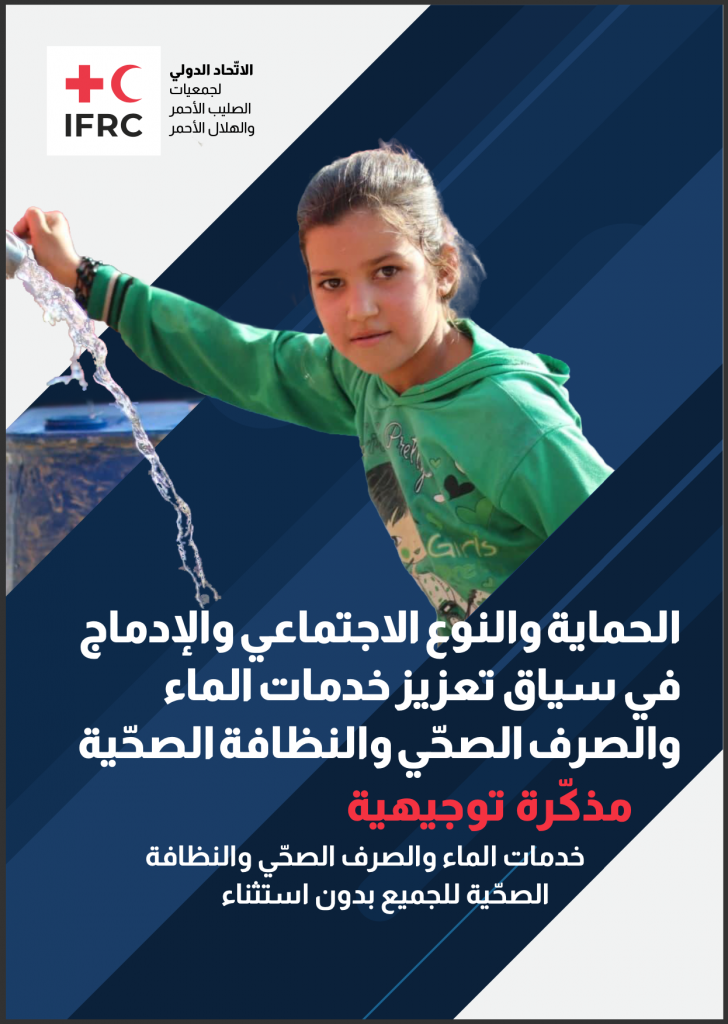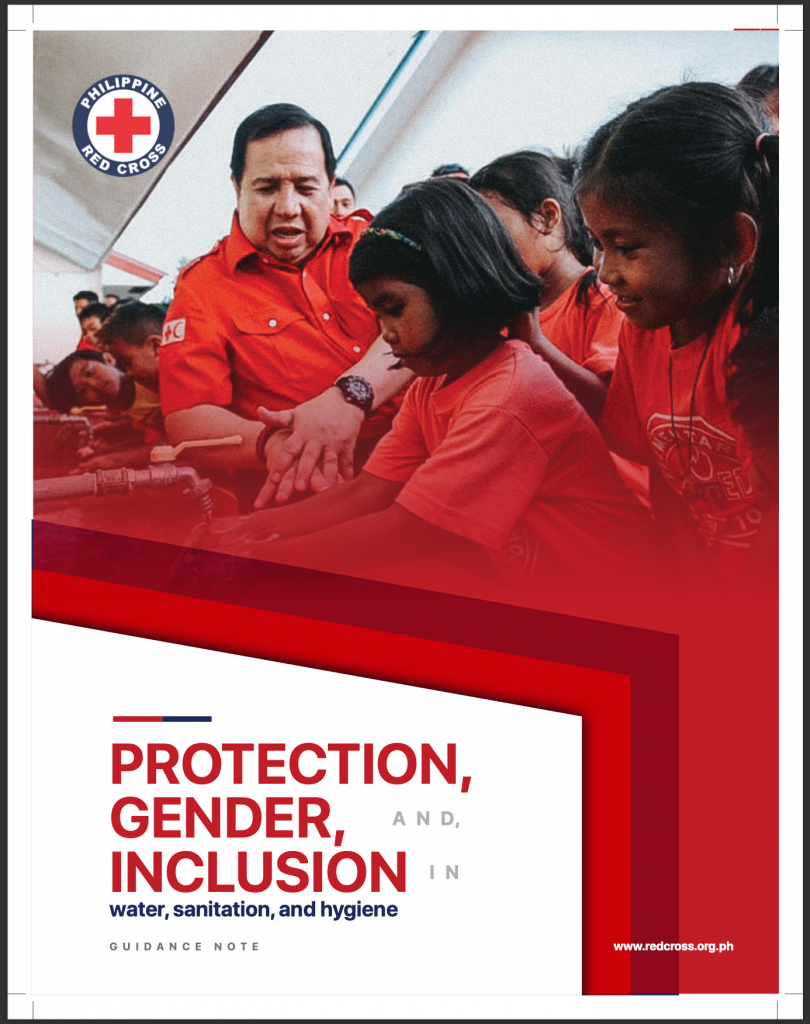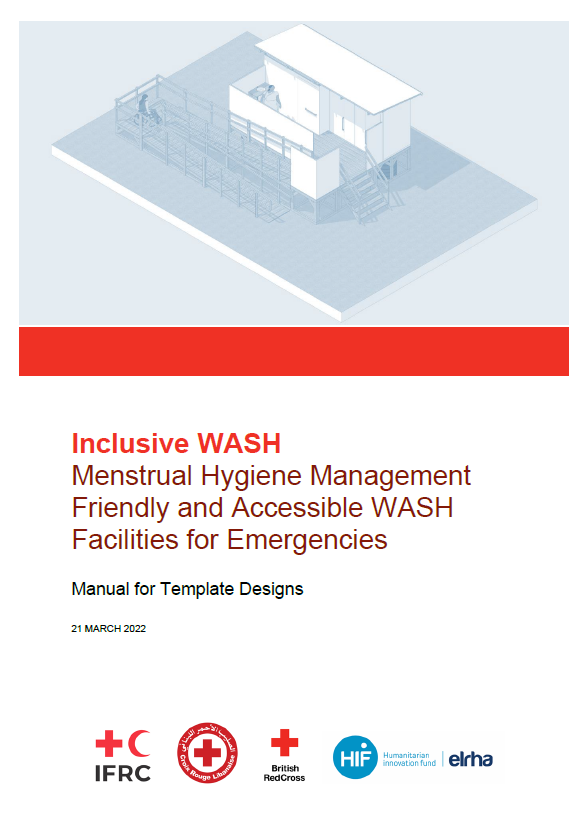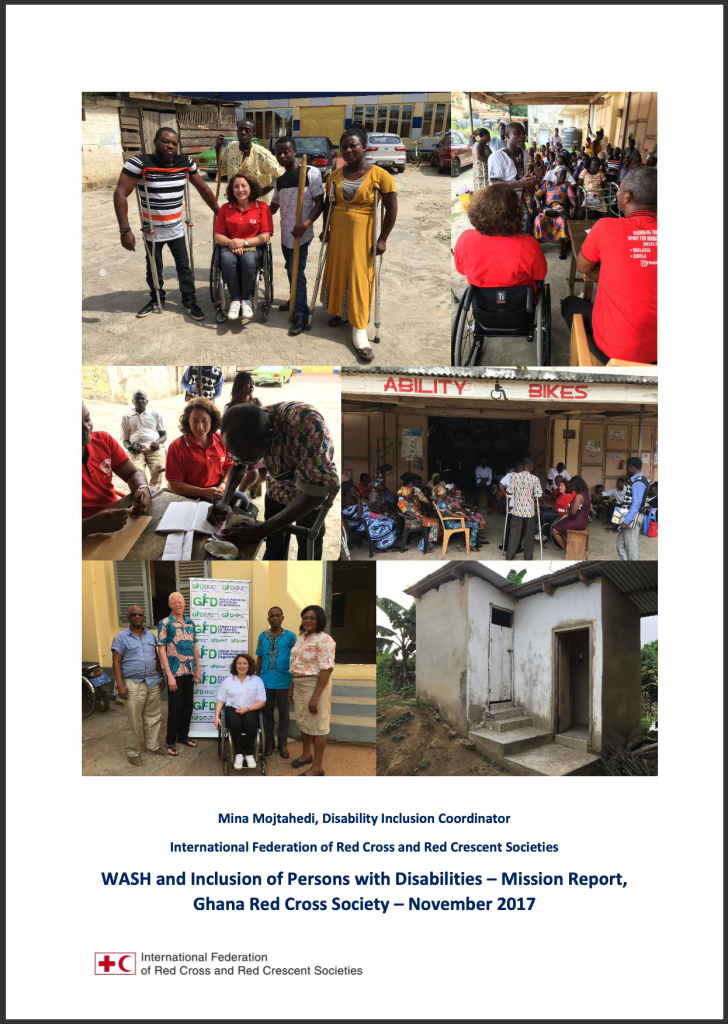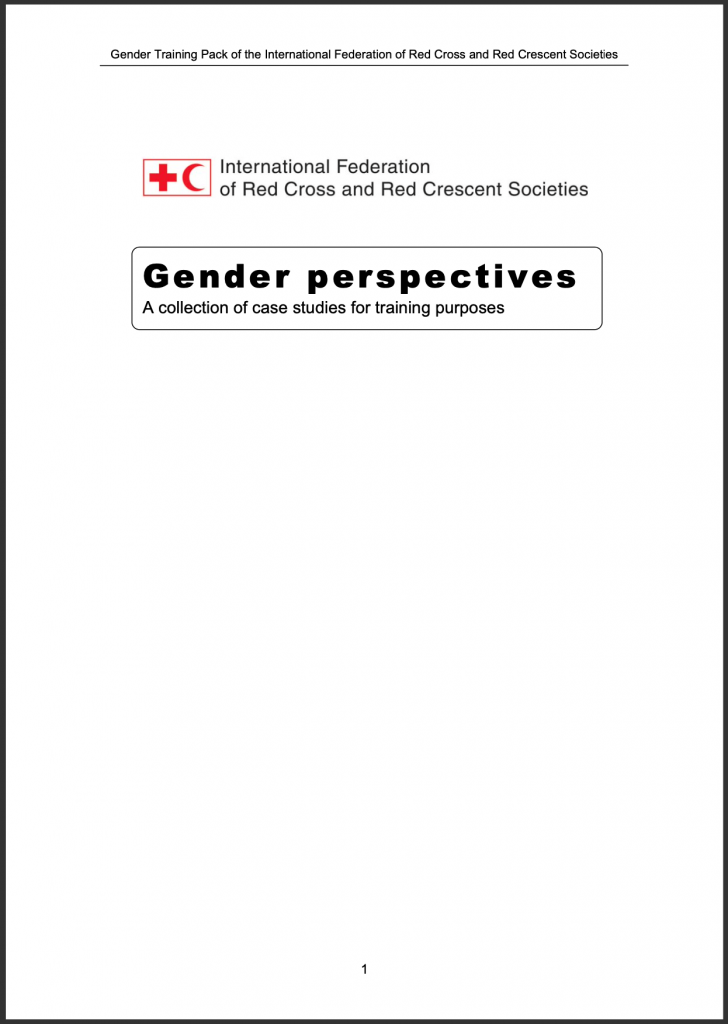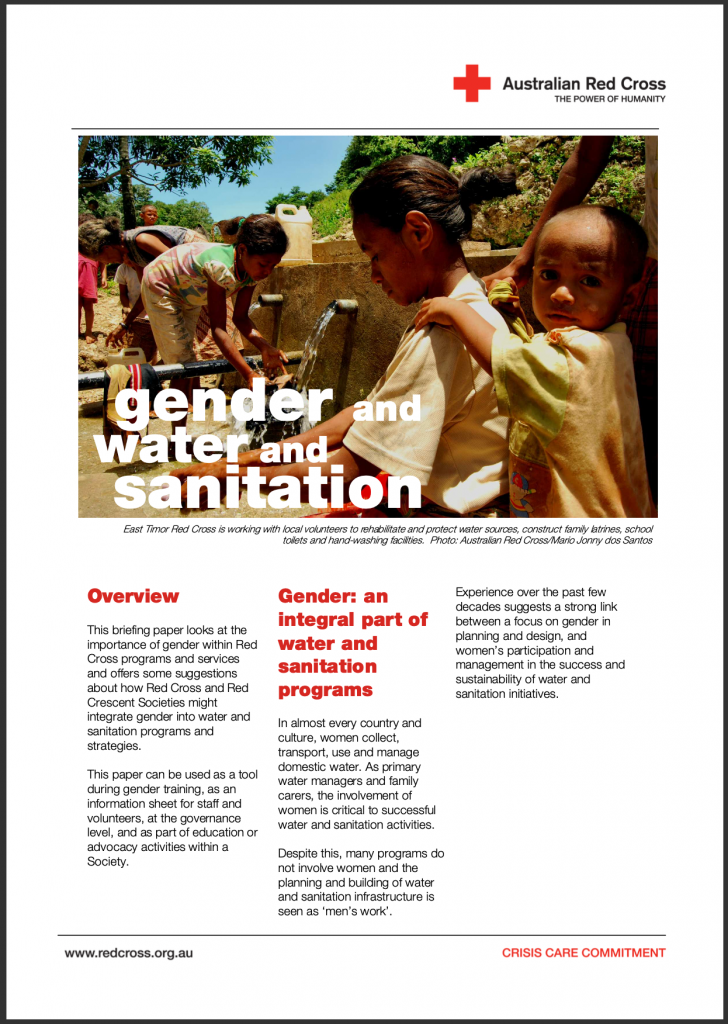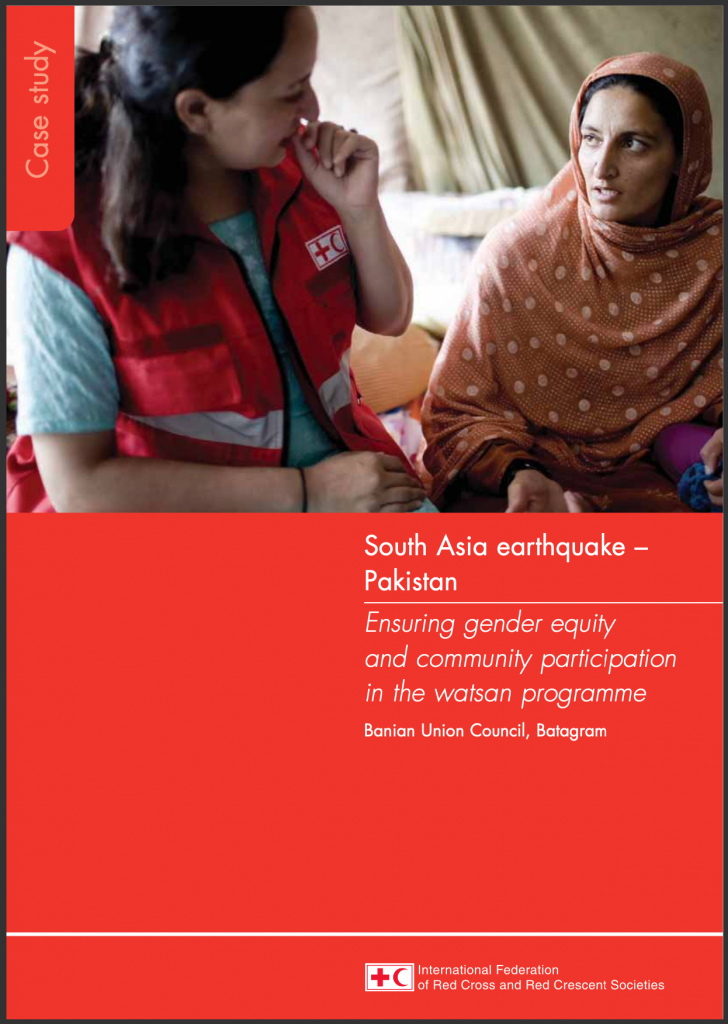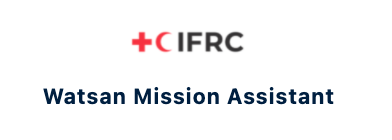
Protection, Gender and Inclusion (PGI)
We know that addressing protection, gender and inclusion (PGI) in WASH is important: it reduces the risk of violence, discrimination and exclusion and contributes to building safe and resilient communities where no-one is left behind.
Guidelines and tools
Red Cross Red Crescent Guidelines and tools
IFRCs Protection, Gender and Inclusion (PGI) in WASH Guidance Note
This guidance note provides an overview of key PGI issues to consider when assessing, designing, implementing and monitoring both long-term and humanitarian WASH programmes, in the Red Cross Red Crescent context.See below for other languages – Click on any image to download the guideline
Standard emergency latrine or bathing area designs are often not appropriate for people who menstruate, nor accessible to those with disabilities. To contribute to solving this problem, the IFRC, Lebanese Red Cross, British Red Cross and Arup implemented a project to design and pilot MHM friendly and accessible emergency WASH facilities. This work was supported by Elhra’s Humanitarian Innovation Fund (HIF).
Adaptable designs for i) a raised latrine block, ii) bathing block, and iii) trench latrine, including construction drawings, bill of quantities, and step-by-step instructions are available here:
- Manual for Template Designs – MHM friendly and Accessible emergency WASH Facilities (without appendices)
- Manual for Template Designs – MHM friendly and Accessible emergency WASH Facilities (Full version – with appendices)
- Raised Latrine Block drawings and step-by-step
- Bathing Block drawings and step-by-step
- Trench Latrine drawings and step-by-step
External Guidelines and Tools
- Compendium of accessible WASH technologies
- Violence, gender and WASH toolkit
- Inclusion made easy: Guide to disabiltiy in developmet CBM
- WaterAid Understanding and addressing equality, non-discrimination and inclusion in water, sanitation and hygiene (WASH) work
- Humanitarian inclusion standards for older people and people with disabilities
- Guidelines for locally sourced and cost-effective strategies to modify existing household toilets and water access, CBM (2018)
- Guidelines for locally sourced and cost-effective strategies for hygiene at home for people with high support needs
Standard emergency latrine or bathing area designs are often not appropriate for people who menstruate, nor accessible to those with disabilities. To contribute to solving this problem, the IFRC, Lebanese Red Cross, British Red Cross and Arup implemented a project to design and pilot MHM friendly and accessible emergency WASH facilities. This work was supported by Elhra’s Humanitarian Innovation Fund (HIF).
Adaptable designs for i) a raised latrine block, ii) bathing block, and iii) trench latrine, including construction drawings, bill of quantities, and step-by-step instructions are available here:
- Manual for Template Designs – MHM friendly and Accessible emergency WASH Facilities (without appendices)
- Manual for Template Designs – MHM friendly and Accessible emergency WASH Facilities (Full version – with appendices)
- Raised Latrine Block drawings and step-by-step
- Bathing Block drawings and step-by-step
- Trench Latrine drawings and step-by-step
Learning resources
Red Cross Red Crescent Learning resources
External Learning resources
- Accessibility audit checklist for public latrines, CBM, World Vision
- Gender in Humanitarian Action - WASH IASC
- IASC Gender handbook: WASH chapter
- IASC GBV guidelines-WASH chapter
- Indicators for a gender sensitive approach (WaterAid)
- GENDER, WATER AND SANITATION CASE STUDIES ON BEST PRACTICES, UN 2006
Advocacy and communications material
PGI and WASH alphabet soup (English)
PGI and WASH alphabet soup (Spanish)
PGI and WASH Episode 2: How to incorporate SADD data into WASH surveys
To include resources on this page, or for more information on IFRC initiatives please contact: Alexandra Machado or wash.geneva@ifrc.org
